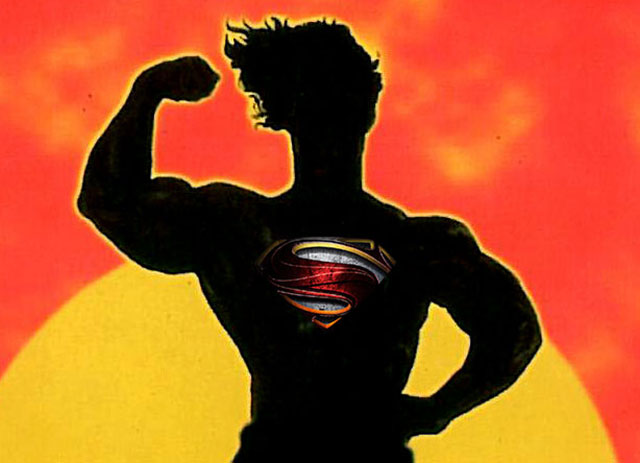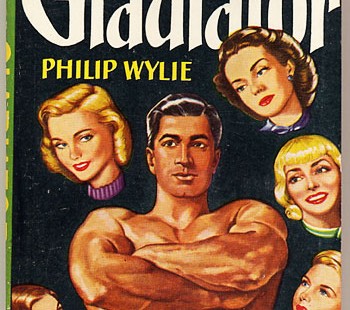Featured Projects

On 21, Jun 2013 | In Print Journalism | By erikgerman
Super Secret: Revealing the real original Superman
For Esquire
A story for Esquire about superheroes and rip-off artists. Uncovering the source material for the 1930s Superman comics reveals why 2013’s supposedly fresh and edgy reboot,Man of Steel, probably wasn’t so original after all.
Here’s the story:
In 1930, a new adventure story offered American readers a cutting-edge hero — a man with titanic strength, bulletproof skin, and the ability to leap tall buildings in a single bound — but his name wasn’t Superman.
The character was Hugo Danner, protagonist of a luridly bad novel titled Gladiator, by Philip Wylie.
The Superman we all know, created by Jerry Siegel, wouldn’t appear on the cover of a published comic book until eight years later. Whether Siegel’s character was, strictly speaking, a rip-off of Hugo Danner I’ll get to in a minute.
A more interesting question may be what debt this year’s most recent installment of the Superman legend owes to Danner. In case you’ve spent the last few months among the Amish, director Zach Snyder’s reboot of the Superman story, Man of Steel, hit theaters last weekend.
This is the one where Superman seemed sad! Where he had a beard! Where he hitchhiked and worked on a fishing boat! The movie recasts Superman as a brooding outsider, alien to himself and to mankind. Here’s the Man of Steel, forged in an edgy new alloy.
 Reading Wylie’s Gladiator alongside this new movie delivers a particularly weird experience for a whole bunch of reasons. One of them being the possibility that the very aspects of Snyder’s new Superman that felt the most fresh and game-changing turn out to be perhaps not so new at all.
Reading Wylie’s Gladiator alongside this new movie delivers a particularly weird experience for a whole bunch of reasons. One of them being the possibility that the very aspects of Snyder’s new Superman that felt the most fresh and game-changing turn out to be perhaps not so new at all.
To save you the pain of reading Wylie’s Gladiator, because it is seriously that bad, here’s a quick gloss:
An ingenious scientist doses his unborn son with a strength-giving serum — described later as “a plasm new to biology” — causing the birth of “super-child” Hugo Danner, “an invulnerable man.” The boy grows up to become a staggeringly talented athlete, then a strong man, a soldier, an adventurer, and more — ceaselessly struggling against people who resent his gifts and subvert his good intentions. He beds a string of women but never finds love. Danner (spoiler alert) dies alone on a stormy mountaintop screaming at God.
In case you think I’m overstating Gladiator’s badness, here’s the climax of that scene:
He put his hand to his mouth and called God like a name into the tumult above. Madness was upon him and the bitter irony with which his blood ran black was within him. A bolt of lightning stabbed earthward. It struck Hugo, outlining him in fire. His hand slipped from his mouth. His voice was quenched.
Looking past the nonsense, the book remains hard to read without suspecting the Man of Steel’s original creator, Jerry Siegel, did some significant borrowing back in 1938.
Hugo Danner comes from a small, rural town (Colorado instead of Kansas, but still); Danner spends a great deal of his time concealing his strength; as a young man, Danner even builds himself a remote fortress where he could find solitude.
“I can do things, Dad. It kind of scares me,” Danner says early in the book. “I can jump higher’n a house. I can run faster’n a train.”
Later on, Danner come out with this: “I’m like a man made of iron.”
I’m cherry-picking, but the similarities are hard to mistake. I’m not the first to notice. Philip Wylie threatened to sue Siegel for plagiarism in 1940 — this according to historian Gerald Jones’s wonderfully written Men of Tomorrow: Geeks, Gangsters, and the Birth of the Comic Book.
The suit was apparently never filed and later paperback editions of Wylie’s book retroactively capitalized on the connection, depicting a heroically muscled, shirtless Danner under a tagline reading, “The lusty life of an uninhibited superman.”
Nietzsche’s Übermensch and Bernard Shaw’s Man and Superman were common reference points in 1930s culture, high and low, long before Superman or Danner. Wylie’s innovation was pulling his hero down from the philosophical ether and pitting him against the physical world. That’s what captured the imagination of the young comics enthusiast named Jerry Siegel in the years when he cooked up the red-caped prototype of the American superhero.
“Until he encountered Wylie’s Hugo Danner, however, Jerry had never seen a superman whose feats were set so vividly against a familiar and constraining reality,” Jones wrote. “He seems to have collided with the product of a literary world very different from the one he’d known, a novel that sent his fantasies spinning in a significant new direction.”
The smoking gun in Superman’s debt to Hugo Danner is a “capsule review” Siegel apparently wrote summarizing Wylie’s novel in a comics fanzine years before Superman appeared. At least this is what Jones claims, albeit vaguely, in Men of Tomorrow.
When I called the historian up the other day, hoping he’d dish a little more, he made a sheepish confession.
“I got that from a secondary source,” Jones told me. Meaning, someone who’d remembered reading the review in Siegel’s fanzine mentioned it to Jones, but Jones said that magazine has since disappeared.
Still, Jones says the consensus among comic scholars is clear on Siegel’s debt to Gladiator.
“Pretty much everybody agrees that he must have read it,” Jones said.
There remain enough differences between the two heroes that Siegel deserves his place in the pantheon of fictional character creators. Danner wanders the earth while Superman sticks with his reporter’s job. Danner has a string of female conquests while the Man of Steel only has eyes for Lois. But the most notable contrast, Jones says, is the way Siegel permits his Superman a more positive reception from the world.
“Siegel was saying the world needs a superior being to save us from what no one else can,” Jones said. “And Wylie was clearly telling us that the world couldn’t handle a superior being.”
Which is what makes reading Wylie’s Gladiator alongside the latest Superman movie so strange. I don’t know if Zach Snyder or his screenwriters ever heard of Hugo Danner or Philip Wylie. Who would inflict that book on themselves if they didn’t have to? There’s a good chance the screenwriters simply took a hard-eyed look at the loneliness of difference and came to some of the same conclusions as Wylie.
And yet. I can’t help considering the dramatic moments where this dark center of the story finds expression.
There’s the bullying of the hero by other children; the parental admonition to keep the powers secret; the inadvertent display of strength after a road accident; the misunderstandings from adults in the aftermath. And all of that giving rise to our wandering, melancholy-but-my-how-handsome bearded man on a boat.
If you think I’m only describing Snyder’s movie, readjust. Everything just listed also happens in Gladiator.
The offshore breeze stirred his dark hair. There was a growth of equally dark beard on his tanned jaw and cheek. Steely muscles bulged under his shirt.
That’s Hugo Danner at sea, partway through chapter ten.
Read on esquire.com






